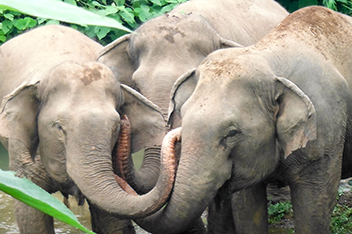

Zoos teach us a false sense of our place in the natural order. The means of confinement mark a difference between humans and animals. They are there at our pleasure, to be used for our purposes. Morality and perhaps our very survival require that we learn to live as one species among many rather than as one species over many. To do this we must forget what we learn at zoos. Because what zoos teach us is false and dangerous, both humans and animals will be better off when they are abolished. —Dale Jamieson
Kiersten Cluster is an Early Childhood Special Education teacher for the Los Angeles Unified School District. She teaches students ages three to five with moderate to severe disabilities. She holds a B.A. in English from U.C. Riverside, a J.D. from the U.C.L.A. School of Law, and a teaching credential and M.A. in Early Childhood Special Education from California State University, Northridge. She lives in Los Angeles with her husband Darryl and their two rescue dogs, Fiona and Marty. They also have two grown human children.
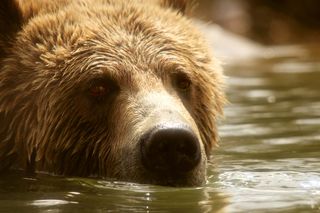
Science shows that animals are not violent by nature, yet the myth persists.
Published in Psychology Today: Read article.
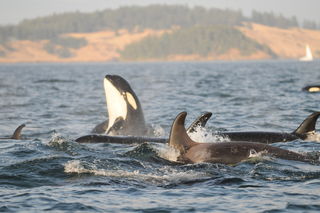
Published in Psychology Today
There are more things in heaven and earth, Horatio, Than are dreamt of in your philosophy. – William Shakespeare, Hamlet (Act I, Scene 5)
Menopause is a subject that variously provokes jokes, distress, and disorientation. Read full article.
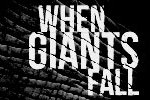
Executive Director Gay Bradshaw has joined the crew of When Giants Fall, a documentary film in the works that gives incisive treatment to the plight of African Elephants in the midst of poaching, armed conflicts, and other stressors. As an adviser in the film’s creation, Dr. Bradshaw’s brings her unique perspective on PTSD and trauma in wild Elephants, providing a “true north” veracity to the final product. The film is due for release January 2015.
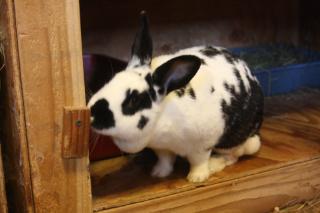

Strumming my pain with his fingers; Singing my life with his words; Killing me softly with his song; Killing me softly with his song; Telling my whole life with his words; Killing me softly with his song – Charles Fox and Norman Gimbel [1]
One night during those lazy, hazy, summer days, I went into the kitchen as dinner was being prepared. Strains of a Norwegian folksong that harkened icy blue fjords and greygreen cliffs floated through the air. This was the domain of an elderly Valkyrie who presided over cooking and cooks. She was standing by the white enameled stove where a metal pot frothed with boiling water. At first, I was perplexed but then saw what she was doing. She was holding and stroking a live Maine lobster while singing the haunting tune. Suddenly, she plunged the lobster into the boiling pot. I gasped in horror and instinctively stepped back. Stunned, nonetheless I managed to ask why she was doing what she did. She explained that the singing and stroking relaxed the crustacean creating a state of bliss that was preserved as tender flesh of unsurpassed flavor.
A child does not need to be taught to see the suffering of others. I knew then what scientists now declare: lobsters and other animals used for human consumption suffer just as we do under comparable conditions. All animals share with humans the brain structures and processes that govern feeling, thinking, and consciousness. [3, 4] So it is no stretch of the imagination that at the moment before immersion into death, the lobster felt a flash of confusion, stark fear, and betrayal. The well-known food chain, Whole Foods Market, concurs.
Eight years ago, Whole Foods “banned the sale of live lobsters and crabs. . . citing that transporting, storing, and cooking live animals was inhumane.” [5] This came after investigating “the biology and sentience in lobsters, including studying the final report of the November 2005 European Food Safety Authority Animal Health and Welfare panel which concluded all decapod crustaceans, including lobsters and crabs, are complex in behavior and appear to have some degree of awareness, feeling pain and having the ability to learn.” [6]
It is therefore staggering that Whole Foods now has embarked on a pilot rabbit program. No, the pilot rabbit program is not flight training for a species whose intellectual capabilities easily qualify them for such sophisticated tasks. Au contraire – the purpose of the program is to breed and kill rabbits to sell. The store maintains that welfare standards employed for rabbits” are designed around their instinctual behaviors . . . [to] ensure the overall health and well-being of the animals.” The condemned will be given fresh food, medical care, and attention to address “more than 75 species-specific requirements.” In some cases, the rabbits are afforded “pasture/outdoor access and management of outdoor areas, if applicable,” “twice daily inspections,” and even “toenail trimming” and “tooth trimming.” But facts provide a glimpse into the reality behind a carefully constructed illusion: Whole Foods’ requirement that slaughterhouses report rabbit “footpad lesions and abscesses” and “DOA’s (dead on arrival).” [7, 8]
Similar to prison camp authorities who had Liebesträume played for concentration camp prisoners, Whole Foods may try to convince themselves and others that condemned rabbits live a good life under the benevolent hand of humane humans. [9] However, as psychiatrist Robert Jay Lifton points out in his seminal treatise, The Nazi Doctors: Medical Killing and the Psychology of Genocide, such Orwellian doublespeak is a protective psychosocial device to mask reality. [10, 11] In Lifton’s terms, a psychological “doubling” permits the peaceful co-existence of reality and illusion–killing and care. The purpose of the Whole Foods rabbit program and that of concentration camps is one and the same: to maximize exploitation of the inmates and then kill them.
There is no welfare in animal welfare standards designed to optimize death. Whole Foods commits yet another ethical breach: appropriating and re-writing rabbit experience. Not only are they denied lives of dignity and freedom, the rabbits are denied their truth. Telling my whole life with his words, Singing my life with his words. Like the lobster strummed with dulcet tones and fingers, Whole Foods’ rabbits are killed softly, but certainly killed. [12]
Literature Cited
[1] Killing me softly. Recorded by Roberta Flack. 1973. http://www.youtube.com/watch?v=O1eOsMc2Fgg [2] Urban Dictionary. 2014. Sun is over the yardarm. http://www.urbandictionary.com/define.php?term=The+Sun+is+over+the+yardarm; retrieved July 6, 2014 [3] The Cambridge Declaration of Consciousness. 2012. http://fcmconference.org/img/CambridgeDeclarationOnConsciousness.pdf; retrieved July 6, 2014. [4] Bradshaw, G.A., and R. M. Sapolsky. 2006. Mirror, mirror. American Scientist, 94(6), 487-489.http://www.americanscientist.org/issues/pub/mirror-mirror-1 [5] Specter, D. 2014. Do lobsters feel pain? Business Insider. http://www.businessinsider.com/do-lobsters-feel-pain-2014-5#ixzz36ikfarfv retrieved July 6, 2014. [6] Whole Foods Market. 2006. Whole Foods Market stops selling live lobsters. http://www.wholefoodsmarket.com/mission-values/seafood-sustainability/whole-foods-market-stops-selling-live-lobsters; retrieved July 6, 2014. [7] House rabbit Society. 2014. Whole Foods responds to House rabbit Society. http://rabbit.org/whole-foods-respond-to-house-rabbit-society/; retrieved July 6, 2014. [8] Whole Foods Market Pilot Animal Welfare Standards for rabbits http://rabbit.org/articles/wp-content/uploads/2014/07/Whole-Foods-Market-Pilot-Animal-Welfare-Standards-for-rabbits-v1.03-September-20133.pdf [9] Fackler, G. 2007. Music in concentration camps 1933 – 1945. Music & Politics.tohttp://www.music.ucsb.edu/projects/musicandpolitics/archive/2007-1/fackler.html; retrieved July 6, 2014. [10] Lifton, R.J. 1988. The Nazi Doctors: Medical Killing and the Psychology of Genocide. Basic Books. [11] Bradshaw, G.A. 2009. Elephants on the edge: What animals teach us about humanity. New Haven: Yale University Press. [12] Demello, M. 2012. Speaking for animals: Animal autobiographical writing. Routledge.[NOTE: This article was first published as Killing Them Softly: Optimizing Death in the Food Industry on July 6, 2014 in Psychology Today]

See this special interview with Ray Ryan, the “real Ray” who was featured in The Elephant Letters: The Story of Billy and Kani. He is also interviewed extensively about his insights about the psychology and politics of the captive Elephant industry in the book Elephant on the Edge: What Animals Teach Us About Humanity.
Ray worked previously as an Elephant keeper at the San Diego Wildlife Park. Here, he shares an inside view of what captive life is really like for Elephants in zoos, and circuses. Ray holds a Bachelor’s degree in psychology from San Diego State University and is the author of Keepers of the Arc: An Elephants’ View of Captivity.



